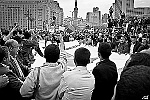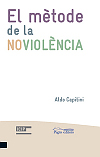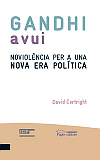PDF version
Download [pdf, 1.44 Mb]Editorial
-

Photo: Ahmad Hammoud
New hopes
I have a dream... – Martin Luther King Jr.
That is both the beginning and the title of one of Dr King’s most famous speeches, which he gave in 1963 and is considered one of the inspirations behind the nonviolent revolution by the black population of the United States. Today, almost fifty years later, his words seemed to resonate elsewhere, in a year in which the first two months have given us some hopeful news.

In depth
Introduction
-
Nonviolence, a tool for transformation
Pablo AguiarNonviolence is a very strong force. The word comes from the Sanskrit (ahimsa) and describes both a philosophy of life and a specific way of achieving political and social change. Its distinguishing feature, as the word suggests, is rejection of the use of violence, but this rejection does not imply resignation or submission, but instead quite the opposite. Nonviolence carries out actions of resistance or civil disobedience in order to achieve its objectives. It has strong links with pacifism, but the two terms are not synonymous. Pacifism is not necessarily linked to a desire for change, but instead emphasises a rejection of violence. However, there is an implicit objective of social and political change in nonviolent action.

-
Central Articles
-
The tradition of Nonviolence in Catalonia
Jaume Botey -
News in nonviolent thought
Pere Ortega -
Resisting violence, disturbing peace
Luca Gervasoni -
Nonviolent action at the NATO summit
Carlos Pérez Barranco -
The new faces of nonviolence: from hunger riots to white revolutions. Gandhi or La Boétie
Rafael Grasa
-
Finding out more
-
Finding out more
On this occasion we present various resources which may be useful for the study of nonviolent thought and its actions. There are many resources about nonviolence available on the Internet. We would like to highlight a speech (both the text and the images); an institution, the International Center for Nonviolent Conflict, and two manuals on nonviolence.

-
Interview
-

Pepe Beunza, Spain's first conscientious objector
Cèlia CernadasPepe Beunza was the first person to introduce a new way of fighting against the army to Spain. In 1971, when the country was still under Franco’s dictatorship, he decided to use civil disobedience, and was imprisoned for his refusal to join the army. He soon became an internationally known figure, beginning what would later become the movement against military service which would finally succeed in bringing it to an end. This interview looks back at those events and his story in recent years.

Platform
-
The future of ETA and the democratic question
Pedro Ibarra -
Esperanto, a tool for peace
Xavier Alcalde
Recommendations
-

The nonviolence method
Aldo Capitini. El mètode de la noviolència. Institut Català Internacional per la Pau; Pagès, 2010. Col·lecció Noviolència i lluita per la pau, 2.
As a courageous advocate of an active and positive conception of nonviolence, Aldo Capitini believed in the primacy of direct action. That is the reason why he was imprisoned twice in Fascist era, and that is why he organised the first march for peace from Perugia to Assisi, in 1961. It was a good example of how to engage in politics, influencing power relations by means of nonviolent methods, despite not being a party politician.

-

Gandhi and Beyond
David Cortright. Gandhi avui: noviolència per a una nova era política. Barcelona: Institut Català Internacional per la Pau; Pagès, 2010. Col·lecció Noviolència i lluita per la pau, 1.
Everyone likes Gandhi. Social and political figures from various areas and with various ideologies often quote him, when justifying civil disobedience, among other reasons. They attribute a great victory to him, in his use of peaceful means against the structural violence used by the British Empire. However, they doubt whether his actions could be applied in other situations. As a result, he is considered an exceptional case (together with Martin Luther King and Nelson Mandela), in a very specific context which therefore cannot be repeated, because it is linked to a unique person in history.

More recommendations
News
ICIP News
International News

